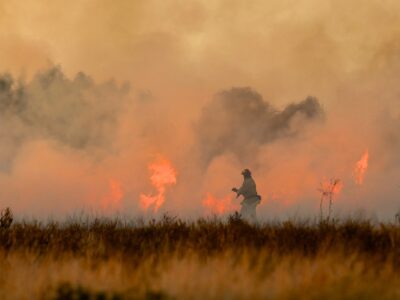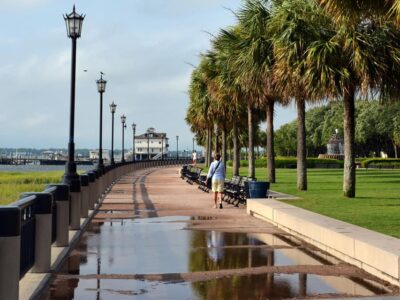In a country as large and far-flung as the United States, there are bound to be forgotten in-between places that aren’t thought of as much as the major hubs and newsmaking locales. Sometimes, these places are called “flyover states” or pejoratively called “the sticks” or the “middle of nowhere.”
However, some call them “paradise,” an oasis from the hustle and bustle of the modern, “go-go-go” lifestyle. For most folks in these flyover paradises, simply call them “home.”
Photo Courtesy NPS
The great state of South Dakota is one such place, an expansive yet sparsely populated state in the Upper Midwest that likely only serves as a stopover for gas or food on the way to somewhere else. But for South Dakotans, their state, history, and lineage are fiercely personal, and every inch of the Mount Rushmore State is a point of pride in who they are, were, and might become.
Indeed, the history of South Dakota is a tumultuous one, so it would be no surprise that the people who call it home wear those tough scars proudly.
While humankind has inhabited the area for thousands of years, during the 18th and 19th centuries, the territory was largely populated by various Sioux Indian Tribes.
In the mid-1800s, European and early American settlers drifted westward in droves, lured by the siren song of the gold rush in the famed Black Hills, creating intense friction between the Indigenous people and these White newcomers. The tension culminated in the tragic massacre at Wounded Knee, where more than 300 Lakota Sioux were shot and killed by the U.S. Army.
While other skirmishes would follow, White expansion into the region would begin earnestly. However, this would not be the end of the hardship South Dakotans of all ethnicities would face, as the state was one of the hardest hit during the Dust Bowl era of the Great Depression.
One can see how a state with as much tragedy, tribulation, and triumph would have quite the story to tell. South Dakota’s history is preserved in their two National Monuments for present and future generations.
Jewel Cave National Monument: One of the hidden gems of South Dakota is a geological oddity that is as vast and intricate as it is singular! Jewel Cave, in the southwestern part of the state, is an over 200-mile system of underground caves and tunnels and is one of the longest caves in the entire world. Native peoples have inhabited the Black Hills for thousands of years, and until the turn of the 20th century, there is no evidence that European explorers ever so much as set foot inside the famous caverns. Brothers Frank and Albert Michaud came across it in 1900 while on a mining expedition. It seemingly offered little in terms of valuable natural resources and was first used as a tourist attraction. Due to the relatively sparse population, this failed, and the cave was largely forgotten until President Theodore Roosevelt declared it a National Monument in 1908 for “scientific interests.” Today, visitors can examine the cave and learn about the discoveries over the last 120 years. This site is as unique as the state in which it resides and is a true must-see!
Photo Courtesy NPS
Mount Rushmore National Memorial: South Dakota’s most famous site also has a unique story to tell! Mount Rushmore, with its gigantic visages of Presidents Washington, Jefferson, Lincoln, and Roosevelt carved into the rock face of the Black Hills, is a cultural oddity and one of the most popular tourist attractions in the world, with more than 2 million visitors a year. Today, Tourists can enjoy the work of sculptor Gutson Borglum and his son Lincoln, which took more than 20 years to realize. They can stop by the visitors center to learn more about the momentous task of funding and constructing the more than 60-foot-tall faces painstakingly carved in the face of Mount Rushmore and can even hike the Blackberry Trail for an up close and personal view of the great monument. Mount Rushmore is as American a memorial as one is likely to find and should rank at the top of any explorer’s list of can’t-miss historical sites.
Photo Courtesy NPS





